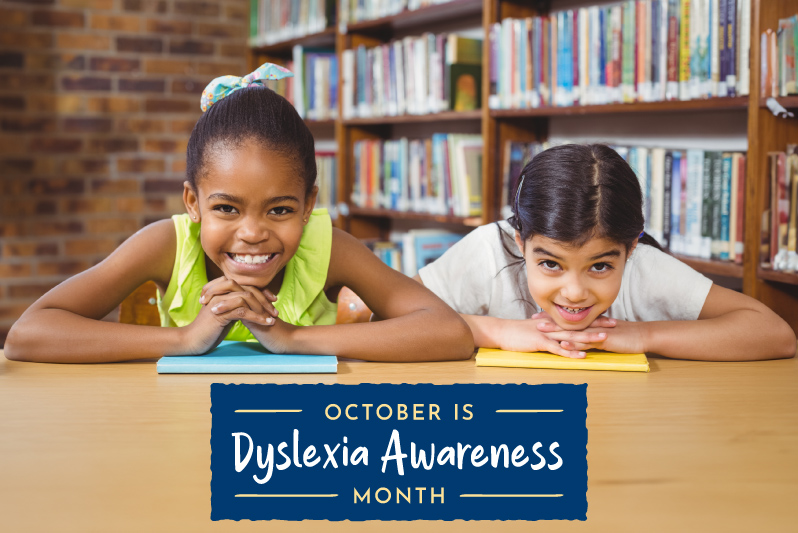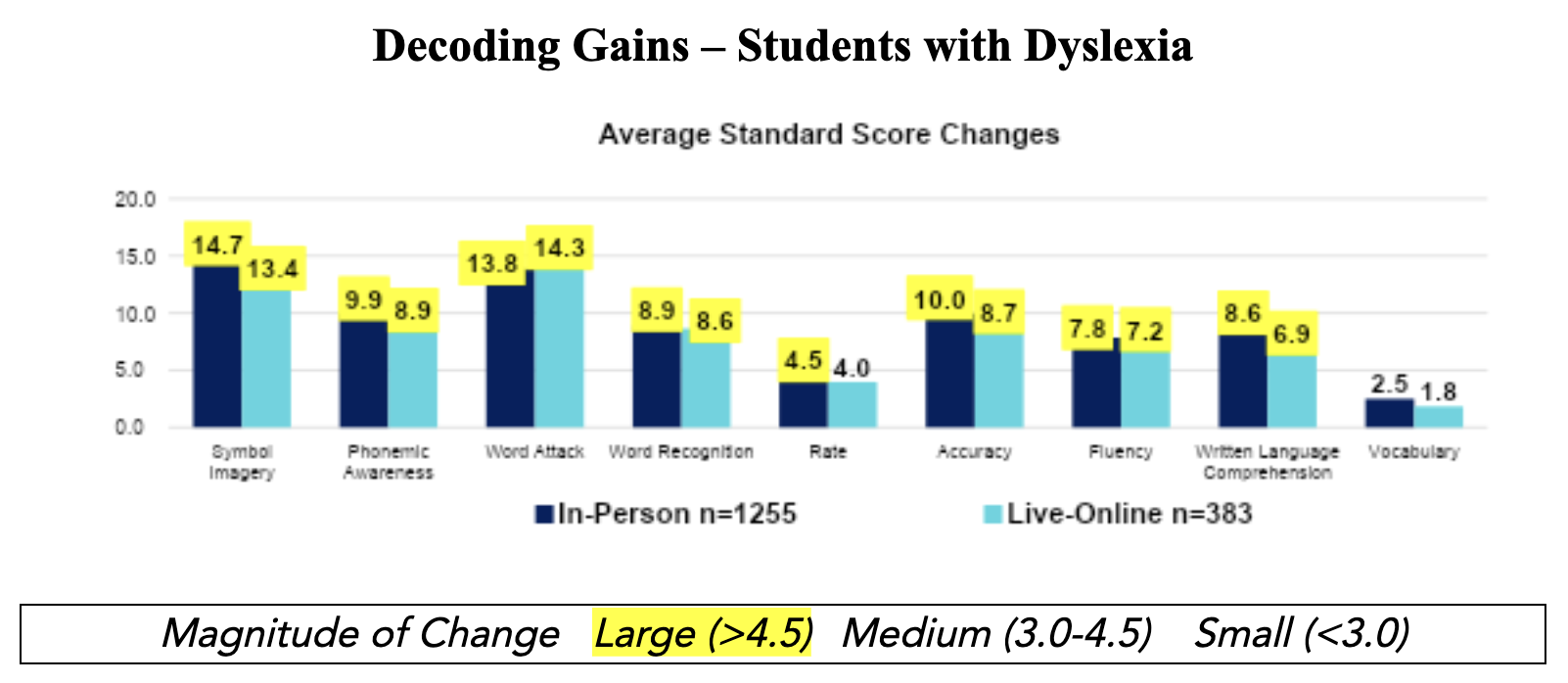
October is Dyslexia Awareness Month, and we are again sharing our belief that all individuals can be taught to learn to their potential—including those with a previous diagnosis of dyslexia.
View our video to learn more about how we help students with dyslexia learn to their potential.
Our Learning Center instruction is available in person and live-online—anytime, anywhere. Students receiving live-online and in-person instruction make comparable, significant gains in reading and comprehension performance, including students diagnosed with dyslexia.
Our Experience and Results
For nearly four decades, Lindamood-Bell has worked with thousands of individuals. Our success with students is due to our unique approach and evidence-based, sensory-cognitive instruction.
The Seeing Stars® program addresses the learning needs of students with dyslexia. Seeing Stars develops symbol imagery, the ability to visualize letters in words. Symbol imagery is integral to independence in sounding out new words, recognizing common words, spelling, and fluent contextual reading.
Students with a Prior Dyslexia Diagnosis Who Received Decoding Instruction Only

Average Age: 10.2
Average Hours of Instruction: 121.6
Number of Students: 2,483
On average, students with a prior dyslexia diagnosis who received Seeing Stars instruction achieved significant improvements in reading. They made large (statistically significant) standard score changes on seven of nine measures. (Vocabulary was not a targeted measure of instruction.) The 20-point percentile increase in Word Recognition put these students well within the normal range (25th–75th percentile). The large average standard score change in Paragraph Reading Accuracy should also be noted.
Students with Dyslexia and Live-Online Instruction
The following comparative growth analysis shows statistically significant mean gains for students with dyslexia who received Lindamood-Bell sensory-cognitive in-person and live-online instruction from 2017 to 2025, including all students who received instruction during the pandemic. The gains of students who have received live-online instruction are comparable in growth to those of in-person students. The standard score gains for both populations are large.

Summary
Lindamood-Bell Program Implemented: Seeing Stars
Years: 2017-August 2025
Number of Students: In-Person Students n=1,255 Live-Online Students n=383
Average Age: In-Person Students: 10 Live-Online Students: 11.1
Average Instruction Hours: In-Person Students: 126.1 Live-Online Students: 124.7
Within the decoding-only category, students diagnosed with dyslexia were measured for both progress and comparison. Other than vocabulary, both populations achieved medium to large standard score gains (eight of nine measures). Live-online and in-person students tested statistically significantly higher on post-instruction on all measures.
Results from an ANOVA statistical test of comparative significance (p<.05) indicate that Symbol Imagery, Phonemic Awareness, Word Attack, Word Recognition, Rate, Fluency, and Vocabulary (seven of nine measures) were comparable in growth between the two populations.
Is Dyslexia Permanent?
Researchers from the Institute for Learning and Brain Sciences, University of Washington, have published peer-reviewed research on dyslexia that explores how intensive intervention drives the growth of reading skills in struggling readers.
Dr. Jason Yeatman, one of the study’s researchers, says that although dyslexia is often considered permanent, the findings indicate that the targeted, intensive instruction leads to “substantial” improvements in reading skills and changes in the “underlying wiring of the brain’s reading circuitry.”
Read more here.

Improved symbol imagery changes how students read and spell, regardless of their ages or their struggles with literacy—including students with dyslexia. Numerous peer-reviewed articles based on studies examining the effectiveness of Lindamood-Bell instruction with dyslexic students have been published in scholarly journals – Summary of Behavioral & Neurological Research—Dyslexia
Dyslexia Webinar
View our webinar titled Remediating the Dyslexic Brain: Neuroscience, Research, and Solutions for Recovery. Lindamood-Bell’s Director of Research and Development, Paul Worthington, discusses common dyslexia misconceptions, proven interventions, and the latest research.
With our live-online instruction that is available anywhere, your location is not an impediment to getting help with learning.
For further information or questions, please contact us at 800.300.1818.





